

Through the efforts of the Council and Branch committees the Society has grown into a force to be reckoned with over the years. What a privilege to be counted as one of the team! Thank you Professor Taute, a past president, who was instrumental in getting me into this field when he started the engineering faculty at Potchefstroom University.
Browsing through the minutes of the last 55 years it is amazing to see the changes that have taken place. Some examples of what I mean:
1. In 1980 the membership fee was raised from R10 to R15 per annum – a huge jump! Patron members could join for R30 per annum. Education is a serious point on the agenda.
2. In 1990 The Engineering Professions of SA Act was passed and ECSA was born. The electrical engineering companies joined the Exhibition in Electronics Measurement and Control and the Electrex exhibition came into being.
3. In 1994 the branch in Richards Bay was renamed the Zululand branch. Subsequently it disappeared from the scene only to come back again as the Richards Bay branch and stronger than ever. Change was afoot in our industry and in our country: the Electrex exhibition was handed over to TMC/Reid and the era of apartheid drew to a close.
4. In 1996, after 20 years of service, the SAIMC’s Pulse magazine was replaced with a more professional Technews publication: SA Instrumentation and Control is still being distributed to our members free of charge. Membership reached the 1000 mark in this year.
5. In 2008 the SAIMC plays a pivotal role together with ECSA and the other voluntary associations in preventing the nationalisation of the SAIMC and the implementation of the South African Council for the Built Environment Act, which would have cost all technicians, technologists and engineers their international accreditation.
6. In 2010 our name changes from South African Society for Instrumentation, Measurement and Control to Society for Automation, Instrumentation, Measurement and Control – maintaining the abbreviation SAIMC. élancommunications gives the SAIMC a stand at the 2010 Process Expo. For the first time in many years, the SAIMC participates in the event and evaluates all the training given at the Expo for CPD points in order to satisfy the conditions for registering as professional technicians, technologists and engineers.
7. In 2011 the SAIMC builds a trailer to house 10 First Lego League sets to take to schools who cannot afford their own. First Lego League hears about this venture and donates all the sets at roughly R15 000 each. The SAIMC becomes a Section 21 Company with its own compliance guidelines.
8. In 2012 our membership reaches 1300, even after more than 200 people with whom we had lost contact were removed. The SAIMC and Technews arrange the Society’s first Webinar, which gives SAIMC leadership a view into the requirements of its members. SAIMC negotiates a special deal for members to learn how to use the country’s unofficial business tool – golf. SAIMC joins the Automation Federation and is nominated onto the board of directors. The Society also institutes working committees at Council level to co-ordinate all the actions that are taking place, from website design to education and training, from reviewing our brand to reviewing the constitution. And through it all that wheel keeps on turning back to 1980 – education is still a serious point on the agenda.
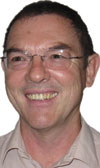
55 years of Progress by Control – a glimpse down memory lane
Any industrial society that survives and grows over a period of 55 years is bound to accumulate an abundance of interesting history along the way. Tracking it down of course is quite a different matter. I would like to thank everyone who responded to the appeals in SA Instrumentation and Control for the photographs and information that helped me put this commemorative letter together. It is of course, and will probably always be, a work in progress. So if you can help fill in the blanks, even if it only helps to caption an old photo, please send to [email protected] so that our hard earned history continues to live for everyone. [Ed: once this issue hits the streets there is nothing we can change in print, but we do promise to keep everything up to date online.]
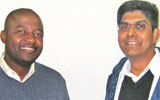
The first submission I received was from Ken Baker, one of our oldest living members.
“Hello Johan. Nice idea to do the feature, I have recently moved my abode here in the Cape and I am still in a state of chaos. Somewhere I do have photos, but when I shall find them is another story.
I guess I must be one of the longest living members, albeit honorary. Although not a founder I did join ICSSA [Ed: Instrument & Control Society of Southern Africa now SAIMC] in 1957/58 and was signed on by Claude Clemp (or was it Klemp?) and Glen Harvey. I have my original certificate somewhere as well as those from 1984 and 1986, my two terms as president. I believe that I might be the only past president to serve that office twice, or possibly you did as well?
[Ed: Vivian MacFadyen points out that while others have served two terms as president, Ken is the only one to do this in non-consecutive years.]
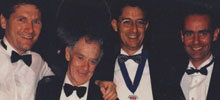
With regards exhibits at Wits physics laboratory, my company participated on two occasions and somewhere I do have photos. History shows that on the second occasion, at the close of the event, we were served a letter from the ICSSA committee barring us from participating in any future shows.
Reason being, as slightly more aggressive marketing men than most ICSSA committee members at the time, and wanting to be more assertive than just plonking instruments and equipment on a lab table, we had a unique ‘wooden board’ mounted at the end of our table with a fairly large sketch of a cow on it. Within the cow was mounted every timing device, relay, temperature controller, light sensitive switch, level detectors etc, that we sold.
In the cow’s mouth was a Santon rotary switch (which we assembled in SA) and when set to the first position the cow went into action stepping through all the devices in sequence. Eventually out of one of the cow’s udders, via a solenoid valve, a tot of Scotch was dispensed. With the switch set in the next position another sequence of events happened and eventually, out the other udder, a shot of soda. Quite a contraption but it sure drew the crowds.
At the end of the first day I had a letter served concerning the Scotch (no liquor allowed on Varsity property – so they said) which forbade me to continue. So we swapped the Scotch for orange juice. But that gimmick was also of great attraction and kept the committee busy deciding what they should do with this guy Baker. Then, at the end of the week, my company had the letter served banning us from all future ICSSA shows. I guess that actually our marketing effort was just too much for them?
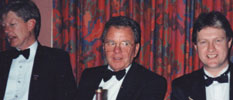
However, all the banning did was to motivate me to establish Scientific, Electronic and Engineering Exhibitions (SEEEXhitions) and therein lays a ‘specialised exhibition’ success story.
Most of that concerned committee had retired when I was personally invited onto the SAIMC Council. It was during the period of my first presidency in 1984 that I planned, instigated and introduced the now successful Council annual banquet. I got the idea from attending the popular SAIEE banquets at the Wanderers. Before that the Johannesburg branch held enjoyable dinner dances, but the new plan was a more formal Council affair for members and businesses.”
Thanks for the memories Ken.
Another of our senior members to respond was honorary Cape Town Branch member, 81-year-old Gunnar Strom. He shared this fascinating look back at the life of an instrument engineer in the 1950s.
“Hello Johan, I became member No. 221 of ICSSA in July 1961 whilst employed as assistant chief electrical engineer at AE&CI’s Modderfontein factory. The president was John Bishop who had worked for ICI and in fact many of the members were English immigrants who worked for companies employing instrument engineers.
I graduated from Natal University in 1953 with a BSc Elec. Eng. Light Current. As a graduate electrical engineer in those days your choice of employer was limited if you wanted to get any further practical training. The one large company in the private sector which did employ pupil engineers was AE&CI where I was offered employment at the Umbogintwini factory near Durban.
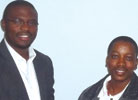
These were rewarding and interesting days that allowed a young engineer to learn something about many different trades. In the mechanical workshop I was given all the private jobs (PJs), since the tradesmen had no job numbers to book these against. The most common were skimming car brake drums and sharpening rotary lawnmower blades. In the electrical workshop many hours were spent conversing with the foreman, listening to anecdotes and drinking coffee.
After six months I moved out of the electrical workshop to assist the construction electrical engineer, a Mr Richards, during the construction of the new sulphuric acid and chlorine plants. This was the most enjoyable period of my tenure as a pupil; he was the most superb teacher/trainer I have ever met.
So far, the nearest I had got to instrumentation was maintenance of the GEC PAX installation. It had step-up rotary selector switches, hundreds of mechanical relays and thousands of contacts, which although the system was in an air-conditioned room, did not stand up well to the costal damp. Cable fault finding was fun and it was amazing how often we found the right spot without having to search.
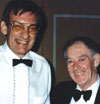
At the end of the two-year training period I was formally interviewed by the chief engineer who told me that he had received assessments from all the departments and that some had said I had been full of cheek. In his opinion this was good. He endorsed: “It’s a jungle out there!”
He offered me the choice of joining the electrical or instrumentation departments. I opted for the instrumentation department, which consisted of Dr Peter Ashwell hurriedly drafted in when it was realised that the new chlorine plan needed an instrument engineer to keep it running.
The two of us were on a steep learning curve. Neither of us had heard of flapper nozzles or PID controllers. Now we came across Foxboro Model 40 and Kent, both pneumatic, and Leeds & Northrup and Cambridge, both electronic. L&N had diode, triode and pentode valves with the requisite pin bases. No 12/24 volt system here, everything ran on 200 VDC! The amplifier had solid wired cards on which we had to trace faults, not ‘just get a spare from the stores'. We had a very up to date valve tester on which we could also check capacitors. The Cambridge instrument worked with a galvanometer fed from a Wheatstone bridge. The galvanometer needle was suspended by a gold thread and was clamped by two fingers to get the out of balance reading. Flow was generally measured by the differential across an ICI designed orifice plate. DP was measured either by a water or mercury filled U-tube. The later introduction of mag flowmeters and DP cells was a revelation much like the PC.
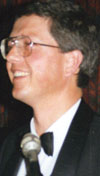
What got us through were the equipment suppliers who formed the backbone of ICSSA, they were a great help with site visits and technical lectures without which we would have been in real trouble. Later in life, particularly after I retired, I attended many monthly SAIMC meetings in Johannesburg and I must express my thanks to the Cape Town Branch for the welcome which I received at the age of 81.”
Welcome to the Cape Town branch Gunnar and thank you for the photograph of your membership certificate from 1961, we have included it amongst the memorabilia.
Finally, thank you John Crossland for your recollections of the SAIMC – 1977 to 1998. John is a past president and was instrumental in founding the Richards Bay Branch in the early 1980s.
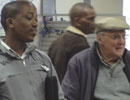
“In 1977 I was working for the Leeds and Northrup Instrument Company in Robertsham, and Honeywell was just up the road. This was significant because Maurice Kirby was not only the MD of Honeywell, he was also president of the SAIMC and he kindly sponsored my application for membership. On 18 October 1977 I was presented with my membership certificate.
Subsequently I joined the embryonic Richards Bay Minerals as the start-up instrument engineer. It was a hurly-burly time with a consortium of Australian, Canadian and South African firms building the biggest mineral terminal in the world. I was surrounded by P&I Ds and loop diagrams and I had to catch up before the consortium banked its cheques and left town. To quell my feelings of uncertainty, I set out to find my compatriots in and around this fledgling new town.
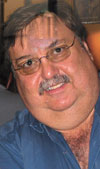
Several SAIMC members came out of the woodwork and by October 1981 the idea of forming an SAIMC branch had taken shape. With the support of Dr Bruce Stewart (then President) and Norman Wolff (vice), Dave Howcroft of Instrotech kindly sponsored our inaugural branch meeting on 24 November 1981 at the Richards Bay Country Club.
Aware of the extreme difficulty we all had finding suitable candidates to fill posts at the artisan and technician level, the Zululand branch focused its attention on education and training and became a strong supporter of the annual Career Guidance Week held for schools in the area. Our annual function raised sufficient funds to present awards and Council even supported the purchase of an exhibition stand, the printing of a ‘Careers in Measurement and Control’ brochure and the development of an automated slide show to go with it.
At the first Council meeting of 1988, I had the honour of being elected as a Fellow of the SAIMC. On a lighter note, it was at about this time that it became necessary to replenish the stock of SAIMC ties.
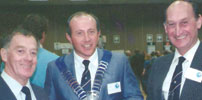
Quotes were duly obtained and samples deliberated over several meetings. As I recall, it was only after the order had been fulfilled that someone spotted an error in the colour combination of the logo.
Check yours – it might be a collector’s piece.
[Ed: Thank you John, we are still trying to figure out what to do with the ties.]
It was largely thanks to Ken Baker’s valuable mentorship that I had the honour of being elected president of the SAIMC in November 1993. Council approved my proposal for each Branch to have a banner depicting the SAIMC logo and we introduced the ‘Branch of the Year’ award.
The next few years were a busy time for the Zululand branch. We raised some R700 000 of industry sponsorship and launched the Science Centre in Richards Bay. In June 1977 we were honoured to host NASA shuttle astronaut, Marsha Ivins. As a control systems engineer, Marsha had been invited to deliver the keynote address at an SAIMC function, but the Branch had managed to get the ‘Appearances Office’ at NASA to include a weekend in Zululand.
Around this time SAIMC affairs were reported in Pulse magazine, but a move was afoot to appoint an official mouthpiece for the institute. As I recall it, discussions were being held with the late Jack Yelland and Ray Beaumont, both of whom put forward credible proposals. Although not unanimous, the consensus went in favour of Ray’s SA Instrumentation and Control journal and it is rewarding to see that this decision has stood the test of time.
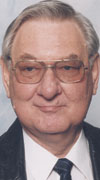
It was also the time that my years as an active SAIMC member were coming to an end. One of my final contributions was the work I did together with Sid Bishop (who had been involved in drafting the original based on ICSSA) to update the constitution. It was during Mark Tibbenham’s tenure as president and the three of us did extensive research to update various aspects, like the translation of the seemingly obscure Latin scroll in our coat of arms. [Ed: ‘Cohibendo Proficere’ was translated as ‘Progress by Control’ by the linguistics department of Wits University.] Ultimately we were successful and delivered a detailed draft document to Council.
After 20 years of South African control and instrumentation engineering, I felt the time was right to move on. Once again I find myself spending my time attending to the needs of the Science Centre movement we started all those years ago.
I wish all my past colleagues well.”
Hear hear John.
In closing this commemorative letter I invite members, past and present, to keep this initiative going. In today’s modern social media parlance, crowd sourcing is the only way to keep the history alive.
| Tel: | +27 11 312 2445 |
| Email: | [email protected] |
| www: | www.saimc.co.za |
| Articles: | More information and articles about SAIMC |

© Technews Publishing (Pty) Ltd | All Rights Reserved